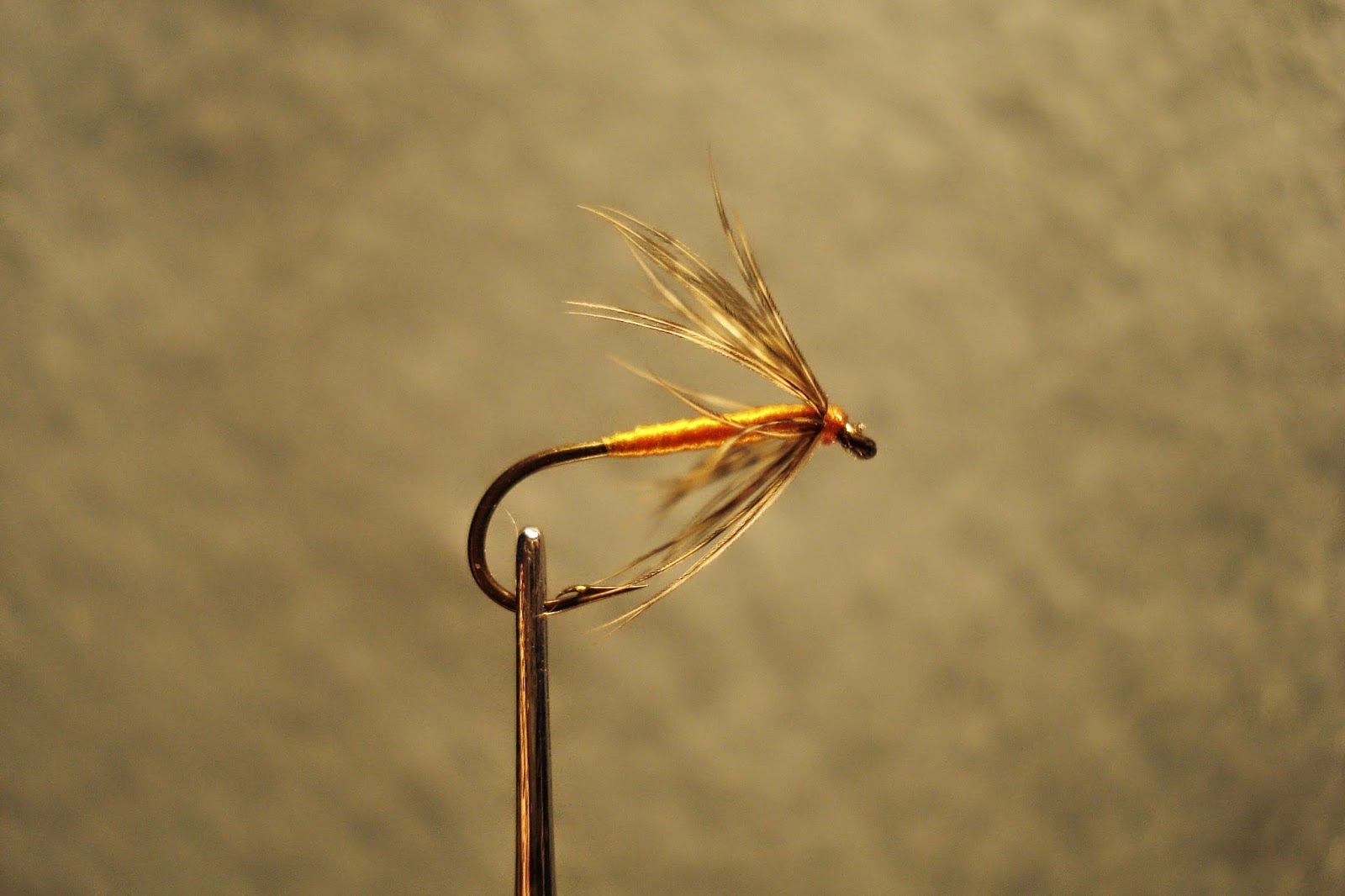|
|
Even before the advent of the barrel-bodied, highly effective versions of the Hare's Ear that gained popularity in the 70s and 80s and the gold-bead-headed variety that showed up in the 90s, the Hare’s Ear nymph was long a staple of the modern fly box, just as the the winged wet Hare's Ear had earlier been a stock pattern for southern chalkstream anglers and their North Country counterparts in England.
In his Wet Flies (1995) - a new, updated edition is available - Dave
Hughes nodded to American wet fly traditions established by James
Leisenring and Vernon “Pete” Hidy in
the first half of the twentieth century, which drew on the nymphal dressings developed by G. E. M. Skues. Leisenring and Hidy tied wet flies that Hidy would term "flymphs." While Leisenring readily lumped flymphs among traditional North Country Patterns (like his Light Snipe and Yellow), classic winged wets and Stewart's spiders, Hughes explicitly distinguishes the flymph from the soft-hackled fly by virtue of the spiky
body and hackle.
Drawing on Leisenring and Hidy, Hughes explains that the hackle of a flymph “should not dominate the body of the fly. In a well-tied
flymph, the body and hackle entrap bubbles of air and take them beneath the
surface. A properly tied body shows the primary color of any insect that is
around when fish are feeding, plus some slight undercolor that shows through
when the fly is wet in the water. The primary color comes from the dubbing
fur selected. The undercolor comes from the silk on which the fur is spun.
The two colors should harmonize with each other. They should also be in
harmony with whatever insect is available to fish the time you’re using the
fly.” Hughes' description certainly distinguishes the Hare's Ear Flymph from traditional soft-hackle dressings like the Grouse and Green or Orange Partridge, but the uniqueness of its thoracic hackling and the important role the plays in creating the overall effect of life qualifies it for inclusion here, much like the thoracic hackling of nymphs and hatching duns qualified W. H. Lawrie's Book of the Rough Stream Nymph (1947) for inclusion in Sylvester Nemes's Two Centuries of Soft-Hackled Flies (2003).
However contentious this point of definition may be, Hughes' Hare's Ear Flymph (and his flymph in general) is a pattern somewhere between a soft hackle and a winged wet or between a soft hackle and nymph tied in the round, like the nymphal patterns that Charles Brooks advanced in his Nymph Fishing for Larger Trout (1976). Hughes dresses his flymph with a tail and a full body dubbed on silk from the bend to eye of the hook and a rib wrapped over that to the thorax. He ties a hackle in behind the eye, dubs the thorax, and winds the hackle from the eye of the
hook back toward the bend, tying it off in the front third or fourth of the body. He finishes by winding the silk back through the hackle toward the eye of the hook (a technique he recommends for dressing and strengthening Stewart's spiders) and then whip finishing the silk behind the eye of the hook.
“Hook: 12-16.
Thread: Pearsall’s
Gossamer silk, crimson red.
Hackle: Brown or
furnace hen.
Tails: Brown or
furnace hen hackle.
Rib: narrow gold tinsel.
Body: Hare’s mask fur,
or #7 Hare’s Ear Plus, tan.”
Prior to modern Hare's Ear nymphs and Hughes' Hare's Ear Flymph, the classic, winged Hare’s Ear that Leisenring includes in The Art of Tying the Wet Fly and Fishing
the Flymph (1941), which shows the influence of the Hare’s Ear wet fly that G. E. M. Skues
included in Minor Tactics of the Chalk
Stream (1910), was the predominant dressing of the Hare's Ear.
While hare's ear often appears as the body material in North Country and Scottish patterns, it rarely shows up exclusively as a soft hackle In the Practical Angler (1857), for instance, W. C. Stewart described the importance of “hare’s lug,” a Scottish denomination for hare’s ear fur, in dressing Border patterns, particularly for dressing his winged wet fly, the Hare-lug, which he fished alongside his famous, wingless spiders. Stewart draws distinctions like Hughes' for considering the silk in conjunction with the body to create a specific representational effect. He does prescribe specific wings for his three Hare-lug dressings, but the body remains consistent throughout.
The variations in each of Stewart's dressings recalls the Art of Angling (1843), where William Blacker lists similar dressings for the Hare’s Ear, identical in its
versatility and the suggestion that any hackle or winging coupled with a
hare’s ear body will fish:
“Body, Hare’s ear fur,
and a little yellow mohair, mixed.
Wings, Starling,
bunting, or woodcock.”
|














